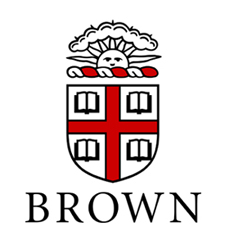Biographical note
Earl Albert Selle was born on November 4, 1906 in Seattle, Washington. Ready for adventure at a very early age, he was already serving as a commercial seaman at 18. He did stints as a beach comber in Aruba, and a bell boy in New York whose real job was to deliver bootleg liquor. He returned to the Seattle area to work as a copy boy and later reporter at the Seattle Evening Post. As political events continued to heat up in the Far East, he crossed the Pacific to do his reporting from Shanghai where he worked for the Shanghai Evening Post and Mercury. There he met and married a young woman of White Russian heritage named Ilona, then fashion editor of the Yankee Clipper. He was in Shanghai when the Japanese invaded Manchuria in 1931 and by 1937 he was writing for China Weekly Review, broadcasting on Chinese radio under death threats from the Japanese military. The Selles returned to the West Coast to be with Earl's dying father, planning to return to Shanghai when feasible. However, as they migrated West again in 1939, Selle and his wife, Ilona, stopped in Honolulu and found jobs with the Honolulu Advertiser. He continued to cover the developments in the Far East, though not from the front lines because of his deteriorating vision, and she wrote the popular "Miss Fixit" column under the pen name of Alycia. They were in Honolulu at the time of the Dec. 7th assault on Pearl Harbor. For the duration of the war Selle continued to work for the Honolulu Advertiser and Reuters.
In the early 1940's, Selle and Ilona separated and he went to California to consult with an eye specialist. While there, he met Elizabeth Nagle who was working with the same specialist to improve her vision in order to join the Air Force. He returned to Honolulu; she followed and they were married in 1944. They had three children: Peter born in 1945, Terrence in 1946, and Rebecca in 1950. Earl rose to the post of chief editorial writer for the Advertiser so that when the Chiangs' ailing advisor, W.H. Donald, was flown to Honolulu by Mme. Chiang for medical treatment in 1946, Selle was able to obtain special permission from the U.S. Navy to interview the Australian who was by then dying of lung cancer. Those interviews resulted in the book Donald of China, which was published in 1948 and widely read. In 1994, selections from the book were translated into Chinese as Wo zai Sun Zhongshan, Zhang Xueliang, Jiang Jieshi shen bian di ri zi / Duanna kou shu ; Zele ji lu.
Selle, who had moved with his family to his wife's home state of Rhode Island after the war, returned to the Far East in the 1950's on a rehabilitation program which allowed the reporter, by then virtually blind, to return to his Pacific beat and report from Hong Kong while Elizabeth Nagle Selle worked for the Civil Air Transport. After the Selles returned to Rhode Island from Hong Kong, the marriage deteriorated. They divorced and Earl Selle eventually returned to Honolulu where he wrote a number of articles and other works about Hawaii, including a 1959 biography of Hawaiian Olympic medalist and surf legend Duke Kahanamoku, published as The Story of Duke Paoa Kahanamoku. Selle died in Honolulu on April 9, 1978.
The Australian journalist who figures large in both this collection and in the interests of Earl Selle is William Henry Donald (1875-1946). Donald was working as a reporter in Melbourne, Australia when he was recommended for a job in Hong Kong at China Mail. Fascinated with Chinese politics, Donald went quickly from observer to participant by becoming first an independent correspondent, and then in quick succession an editor for Far Eastern Review, a friend to "Charlie" Soong and his family which included May-Ling, the future Mme. Chiang Kai-shek, and her sisters, Ching-Ling (the future Mme. Sun Yat Sen) and Soong Ai-Ling (the future wife of one of the wealthiest men in China, H.H. Kung). Donald went on to serve as an advisor to the Chiangs as Chiang Kai-shek rose to power during the Chinese Civil War. Most of his 40 years of papers were lost during his internment in a Japanese prison camp during World War II, but at least two scrapbooks, dozens of candid photos and several folders of clippings housed in this collection remain. The letters of the many publishers who tried to lure him into writing his memoirs fill yet another folder. However, Donald steadfastly refused to share state secrets until he was dying. In the end, it was Selle who convinced him that it would be wrong to take so much history to the grave with him. With Donald's assent, Selle took Donald's scribbled and dictated reminiscences and fleshed them out into the book Donald of China.
(Information in the above paragraphs taken from biographical information in the collection and an interview Holly Snyder conducted with Elizabeth Nagle Selle in March of 2007)


